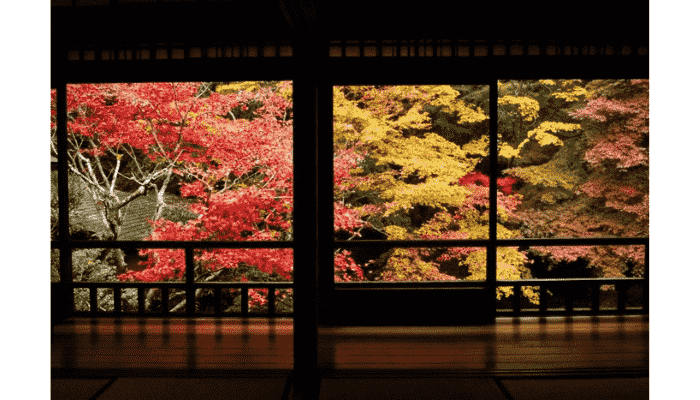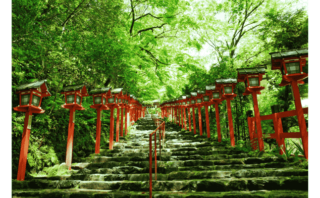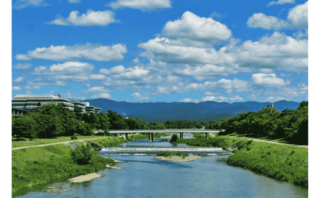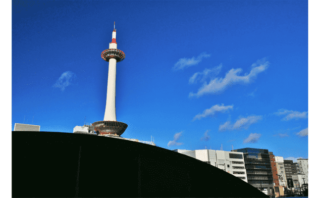Rurikoin Temple is a breathtaking temple in the Rakuhoku area of Kyoto, famous for its stunning scenery that looks amazing in photos.
In spring, the fresh green maple leaves create a beautiful, peaceful atmosphere. In autumn, the temple attracts many visitors who come to see the vibrant autumn foliage reflected on the black lacquered table inside the study hall.
Rurikoin was once closed to the public, but due to high demand, it is now open for a limited time in spring and autumn. In recent years, the mesmerizing reflection of the seasonal scenery on the black table has become a popular attraction, not only among photographers but also among general visitors.
In this article, we’ll introduce the highlights of Rurikoin Temple in spring and autumn, how to get there, and recommended nearby spots.
About Rurikoin Temple
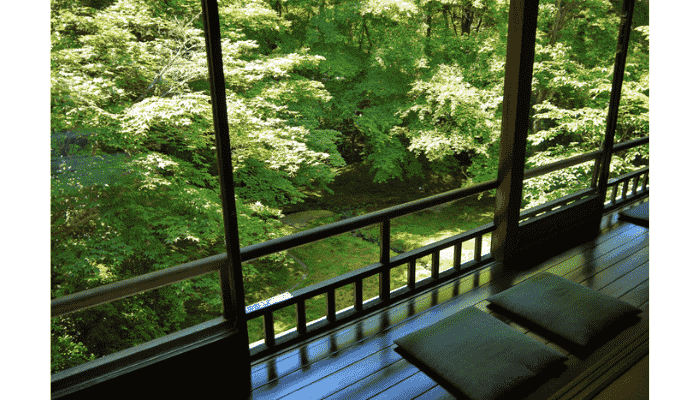
Rurikoin Temple is a Jodo Shinshu temple located in Yase, a quiet area just outside central Kyoto. Yase has long been a retreat for nobles and samurai, offering a peaceful escape from the city.
Although it is only open to the public in spring and autumn, Rurikoin attracts visitors from all over Japan and beyond. Many people consider it one of Kyoto’s best hidden spots for fresh greenery and autumn foliage. Every corner of the study hall offers a picturesque view, making it a paradise for photographers.
The temple is especially famous for the reflection of colorful maple leaves on the black lacquered table in the study hall. This breathtaking sight has become incredibly popular on social media, drawing more and more visitors each year.
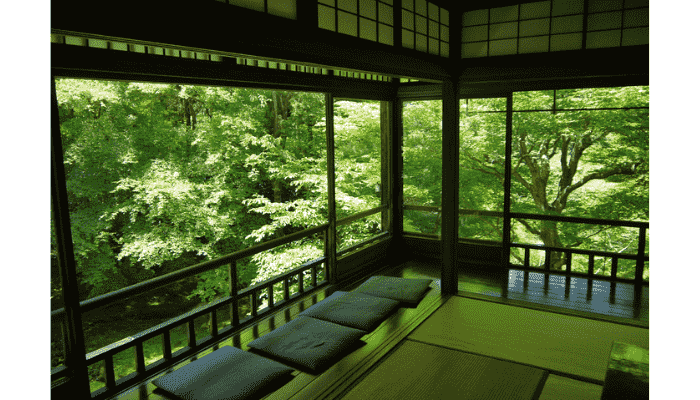
The entrance fee is 2,000 yen, which may seem higher than other temples, but the experience is well worth it. The fee includes a brochure, a calligraphy (shakyo) set with tracing paper, and a pen.
As you follow the designated route inside the temple, you will first see the famous reflection table. Right after that, on the second floor, there is a shakyo (sutra-copying) area, where you can receive a calligraphy set from the staff at the entrance.
If you’ve come all the way to Rurikoin, why not try shakyo? It’s easy—just trace over the sample provided, so even beginners can enjoy the experience.
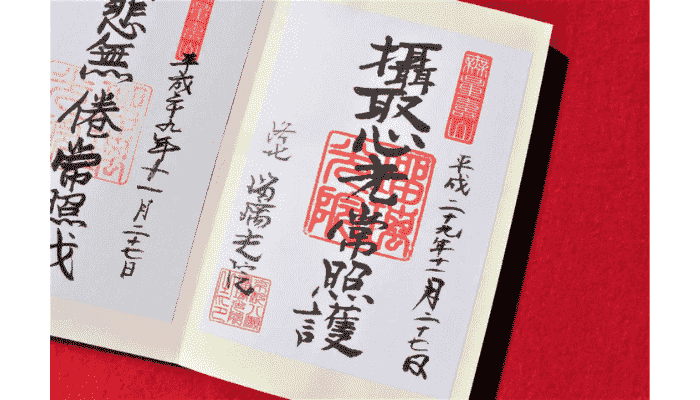
Rurikoin also offers goshuin (temple stamps), so if you’re a collector, don’t forget to get one on the first floor.
The temple’s Japanese garden is not very large, but if you take your time to enjoy the scenery, you can easily spend about an hour here. Be sure to slow down and fully appreciate the beauty of Rurikoin’s garden and the shakyo experience.
Rurikoin Temple
- Address: 55 Kamitakano Higashiyama, Sakyo-ku, Kyoto, Japan
- Map: [Google Maps]
- Access:
- 5-minute walk from Eizan Electric Railway Yase-Hieizanguchi Station
- 7-minute walk from Kyoto Bus Yase Ekimae Bus Stop
- 5-minute walk from Hieizan Cable Car Yase Station
- Phone: 075-781-4001
- Open: No closing days during the open period
- Hours: 10:00 AM – 5:00 PM (last entry at 4:30 PM)
- Admission Fees:
- Special Entry (Spring & Autumn): 2,000 yen
- Middle & High School Students (University students with ID): 1,000 yen
- Visitors with a disability certificate: 1,000 yen
- Children (elementary school and younger): Free
- Important Notes:
- Rurikoin is not open year-round—it is only accessible during special viewing periods in spring and autumn.
- Tripods and selfie sticks are not allowed. However, you can place your camera on the shakyo table for photos.
- Official Website: [Rurikoin Temple]
How to Get to Rurikoin Temple
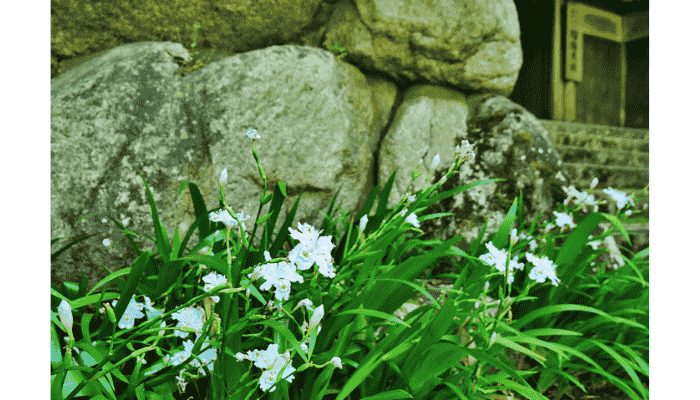
There are three main ways to reach Rurikoin Temple:
- By train only
- By subway and bus
- By bus only
Below, we’ll explain the routes starting from JR Kyoto Station for easy reference. The total travel time is roughly the same for all options.
No Parking Available:
Rurikoin does not have a parking lot, so please use public transportation.
By Train Only
- From JR Kyoto Station, take the JR Nara Line to Tofukuji Station and transfer to the Keihan Main Line. (Fare: 420 yen)
- Ride the Keihan Main Line to the final stop, Demachiyanagi Station, then transfer to the Eizan Electric Railway.
- Get off at Yase-Hieizanguchi Station. (Fare: 430 yen)
- Walk 5 minutes to Rurikoin.
Total Travel Time: About 50 minutes
By Subway and Bus
- From JR Kyoto Station, take the Karasuma Subway Line to Kokusaikaikan Station. (Fare: 290 yen)
- Transfer to the Kyoto Bus #19 and ride to Yase Ekimae Bus Stop. (Fare: 230 yen)
- Walk 7 minutes to Rurikoin.
Total Travel Time: About 50 minutes
By Bus Only
Although this option takes slightly longer, it is the easiest since there are no transfers.
- From JR Kyoto Station, take the Kyoto Bus #17 to Yase Ekimae Bus Stop. (Fare: 400 yen)
- Walk 7 minutes to Rurikoin.
Total Travel Time: About 50 minutes, but this may vary depending on traffic conditions.
Important Notes:
- During the autumn foliage season, traffic congestion is common, so allow extra time if taking the bus.
- Buses run less frequently, so check the timetable in advance.
- If you’re looking for a more budget-friendly option, the bus is the cheapest choice.
Choose the best route based on your schedule and travel preferences!
How to Reserve and Purchase Tickets for Rurikoin
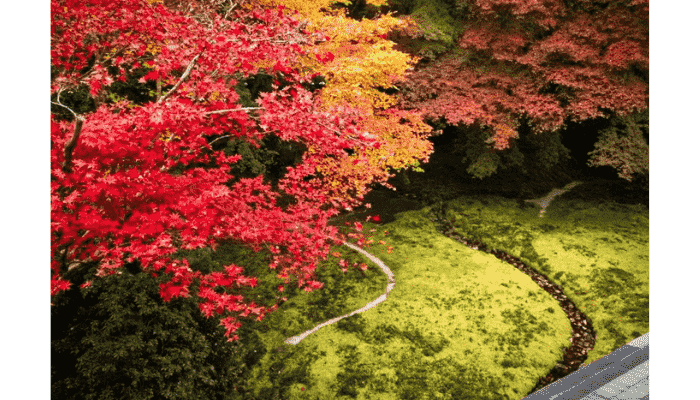
Whether you need a reservation to visit Rurikoin depends on the season.
- In spring 2021, visitors could enter without a reservation.
- In autumn, however, advance reservations were required.
Since the policy may change each year, it’s best to check the official website before visiting.
How to Make a Reservation
You can book your ticket online through Rurikoin’s official website.
- During some periods, walk-ins may be allowed, but checking in advance is highly recommended.
- When booking, you’ll need to provide your name, phone number, and address for each visitor.
- After completing the reservation, you’ll receive a confirmation email—make sure to keep it until your visit.
On the Day of Your Visit
- Arrive at Rurikoin at your designated time and go to the reception desk.
- Simply give your name—there’s no need to show a reservation number or ID.
Tips for Visiting During Peak Seasons
The autumn foliage season is especially busy. If you prefer a quieter experience, visiting on a weekday is recommended.
Highlights of Rurikoin in Spring
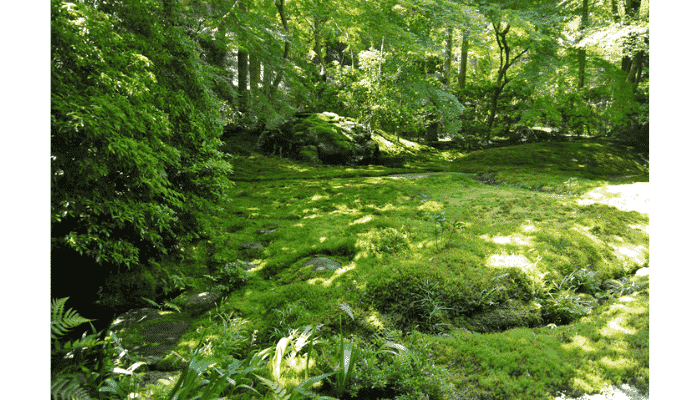
In spring, Rurikoin transforms into a lush green paradise, with vibrant fresh maple leaves and a shimmering Japanese garden.
Unlike autumn, when the leaves turn red, spring offers a soothing landscape of bright green foliage. The beauty of Rurikoin’s fresh green maple leaves is considered one of the best in Kyoto.
While the reflection on the second floor’s black table is famous, don’t miss the stunning view of the Japanese garden from the first floor as well.
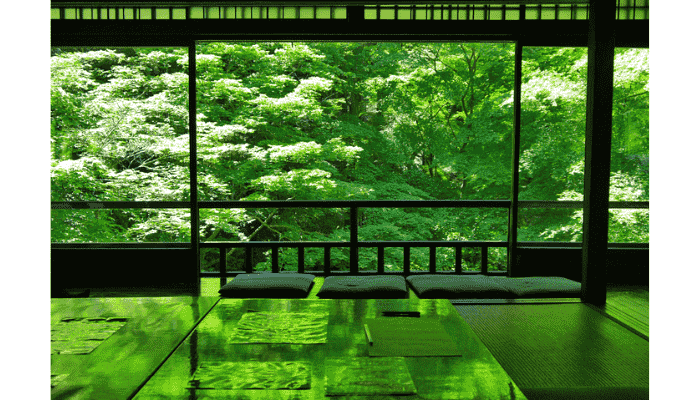
Enjoy a Relaxing Visit
- You can also experience sutra copying (shakyo) in spring.
- Spring is less crowded compared to the busy autumn season, allowing you to take your time and fully appreciate the scenery.
Rurikoin is usually open from April to June in spring, but exact dates may vary each year. Be sure to check the official website for up-to-date information.
Highlights of Rurikoin in Autumn
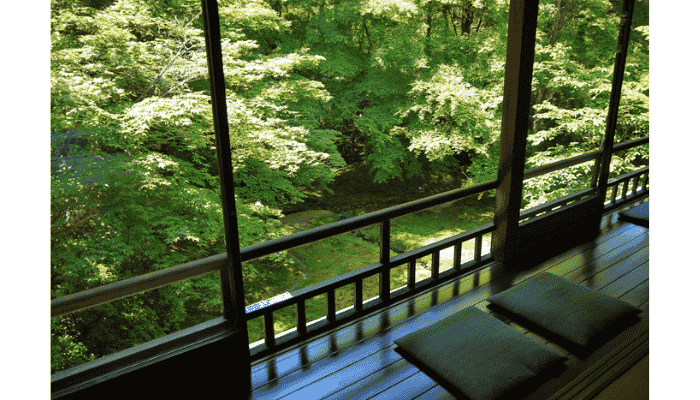
In autumn, Rurikoin is transformed by brilliant red maple leaves, creating a truly magical atmosphere.
The two main highlights of the season are:
- The stunning autumn foliage
- The special nighttime illumination
The Rakuhoku area, where Rurikoin is located, tends to see the leaves change color earlier than other parts of Kyoto. The best time to visit is from early November.
When I visited in mid-November, the leaves were already beautifully colored, as shown in the photos. If you want to see the best autumn foliage, be sure to check online updates on the current conditions before your visit.
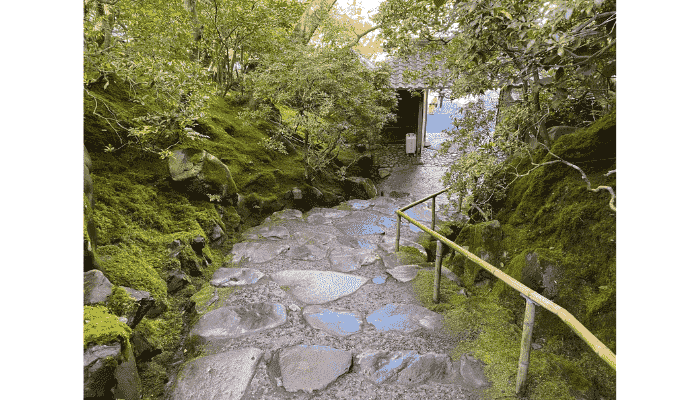
Upon entering through the Sanmon Gate, the first thing you’ll see is Sanrochi Garden, a beautiful pond garden. As you walk toward the main Shoin Hall, you’ll pass a path lined with dozens of different maple tree varieties.
While the famous reflection view from the black table inside the Shoin is breathtaking, don’t forget to step outside on the second floor for a panoramic view of the surrounding autumn scenery. On the first floor, you can enjoy the beauty of the Japanese garden.
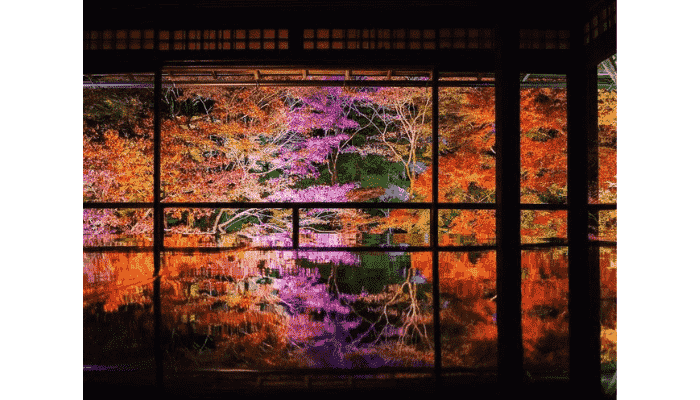
I visited around 5:00 PM, and the sky was already darkening. As night falls, the special nighttime illumination begins, creating a mystical and dreamlike atmosphere.
The lighting is subtle, making the contrast between the dark interior and the glowing red leaves stand out beautifully. Unlike other illuminated gardens, Rurikoin’s indoor spaces remain completely dark, allowing you to fully immerse yourself in the scenery.
How to Join the Special Night Viewing
- The nighttime special viewing is not available through Rurikoin’s official website. Instead, you need to book in advance through the “Souda Kyoto, Ikou” (Let’s Go to Kyoto!) website.
- Only 160 people per day can enter, with two separate viewing sessions.
- The admission fee for the special night viewing is about 7,000 yen per person, which includes:
- The entrance fee
- A commemorative goshuin (temple stamp)
- A 1-day Eizan Railway pass
- A round-trip ticket for the Eizan Cable Car
For the ultimate autumn experience, explore the autumn foliage spots along the Eizan Railway line during the day, then enjoy the magical illumination at Rurikoin at night.
Recommended Spots to Visit Along with Rurikoin
The area around Rurikoin has several attractions within walking distance, as well as some must-visit spots worth a little extra travel time. Here, we introduce a beautiful hidden gem to explore along with Rurikoin.
1. Rengeji Temple

Rengeji Temple is a Tendai-sect Buddhist temple in Sakyo Ward, Kyoto, known for its beautiful garden. Originally, it was located near Kyoto Station as part of Sairai-in Temple, but it fell into ruin during the Ōnin War (1467–1477). It was rebuilt in 1662 during the Edo period, and its main hall and garden have remained unchanged since then.
The temple’s name, “Rengeji”, comes from the Buddhist scripture “Lotus Sutra” (Hokkekyo), referring to the Lotus Treasury World.
The stone-paved pathway leading to the temple is charming and picturesque, and inside the grounds, maple and ginkgo trees create a peaceful atmosphere. As you step through the Sanmon Gate, you are greeted by vibrant seasonal foliage.

One of Rengeji’s main highlights is its stunning Japanese garden, a 400-tsubo (approx. 1,320 square meters) pond garden designed in the Chisen-kaiyushiki style (strolling garden with a pond). The garden is designed to represent Mount Sumeru (Shumisen), a sacred Buddhist mountain.
While the garden view is stunning from the main hall, visitors can also walk around the garden wearing slippers, allowing for a closer experience with nature. However, photography inside the garden is not allowed, so be sure to capture the scenery in your memory.
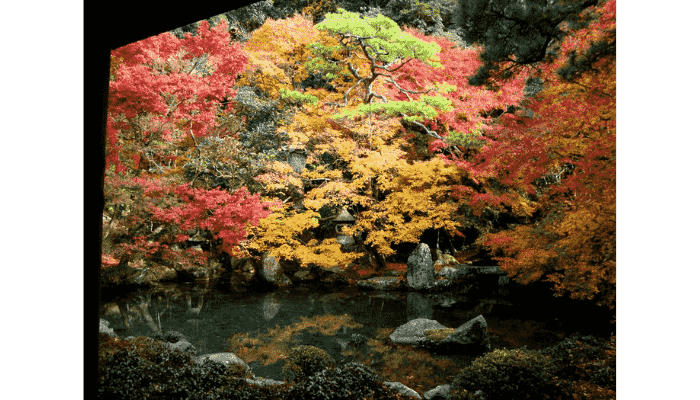
Rengeji Temple is particularly beautiful in spring, with fresh green maple leaves, and in autumn, when the foliage turns vibrant red.
During the autumn season, the garden and colorful leaves create a breathtaking view, and one of the temple’s signature sights is the “framed maple view” (Gakubuchi Momiji)—where the autumn leaves are framed perfectly by the pillars of the temple’s Shoin Hall.
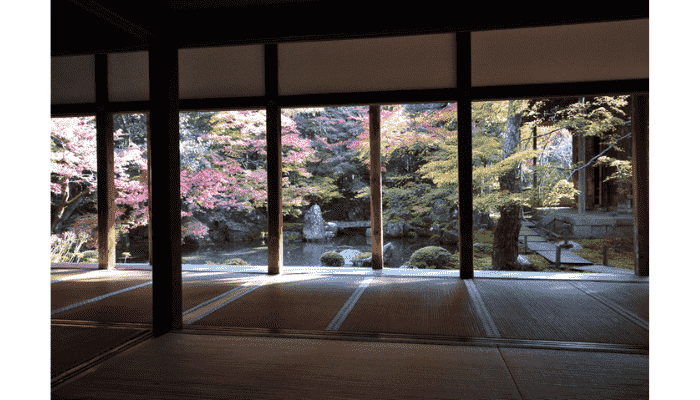
Since Rengeji is located a bit outside central Kyoto, it is much less crowded than other famous autumn foliage spots. When I visited in mid-November, the autumn colors were at their peak, yet I was able to take my time and enjoy the scenery peacefully.
For those looking for a hidden gem with stunning autumn foliage, Rengeji Temple is a fantastic choice.
Rengeji Temple is only a 15-minute walk from Rurikoin, making it a perfect place to visit together.
Rengeji Temple
- Address: 1 Kamitakano Hachimancho, Sakyo Ward, Kyoto
- Google Maps: Click here
- Access:
- 6-minute walk from Miyake-Hachiman Station (Eizan Railway)
- 1-minute walk from Kamihashi Bus Stop (Kyoto Bus)
- Phone: +81-75-781-3494
- Opening Hours: 9:00 AM – 5:00 PM
- Admission Fee: ¥500
- Closed: Open all year round
- Notes: Tripods and photography inside the garden are prohibited.
2. Kifune Shrine
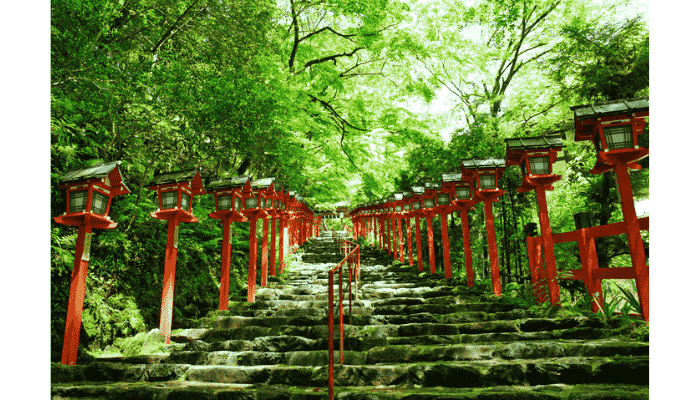
Kifune Shrine is a historic Shinto shrine located in the Rakuhoku (Northern Kyoto) area. It is dedicated to Takaokami-no-Kami, the deity of water, and is well-known for its “mizu-ura” (water fortune-telling). The shrine is also considered a power spot for love and relationships, attracting many visitors, especially women, seeking blessings for romance.
Kifune Shrine consists of three main areas:
- Main Shrine (Hongū) – The central place of worship
- Yui Shrine (Yui no Yashiro) – Known for matchmaking blessings
- Oku Shrine (Okunomiya) – Considered the most sacred part of Kifune Shrine

Each of these shrines offers a unique type of blessing, and there are three different goshuin (temple stamps) you can collect:
- Standard goshuin
- Okunomiya goshuin
- Seasonal goshuin (limited to the fresh green maple season)

It is believed that visiting the shrines in this specific order—Main Shrine → Yui Shrine → Oku Shrine—brings greater spiritual benefits.
One of the most iconic sights of Kifune Shrine is the stone stairway lined with Kasuga-style lanterns at the entrance. This picturesque path, often featured in travel magazines and on social media, is a popular photo spot. Make sure to capture a memorable shot here before exploring further.

Kifune Shrine is stunning in every season:
- Spring & Summer: Surrounded by lush greenery, the area is also a popular summer retreat, offering a cool escape from Kyoto’s heat.
- Autumn: During the fall foliage season, the shrine holds a special nighttime illumination event, creating a magical, dreamlike atmosphere. The lights are turned on around 5:00 PM, making an evening visit highly recommended. (Check the official website in advance for event dates.)
- Winter: A snow-covered Kifune Shrine is breathtaking. Despite the cold, many visitors come to witness its magical winter scenery and take stunning snowy photos.
No matter the season, Kifune Shrine offers a unique and unforgettable experience.
Kifune Shrine
- Address: 180 Kurama Kibune-cho, Sakyo Ward, Kyoto
- Google Maps: Click here
- Access:
- 20-minute bus ride from Kyoto International Conference Center Station
- 30-minute walk from Kibuneguchi Station (Eizan Railway)
- From Kibuneguchi Station, take Kyoto Bus No. 33 to Kibune Bus Stop, then walk a short distance
- Phone: +81-75-741-2016
- Opening Hours:
- Main Shrine: 6:00 AM – 8:00 PM (May–November) / 6:00 AM – 6:00 PM (December–April)
- Goshuin & Amulet Reception: 9:00 AM – 5:00 PM
- During the “Kibune Momiji Lantern Festival” (Autumn Illumination), open until 8:30 PM
- Admission Fee: Free (Goshuin: ¥300)
- Official Website: Kifune Shrine Official Site
Rurikoin is famous for its breathtaking reflections on a polished black table, creating a mesmerizing mirror effect of the surrounding nature.
Located slightly outside Kyoto’s city center, the temple is open to the public only twice a year—in spring and autumn—for special viewing. Despite the limited access, it is well worth the visit.
Each season offers a different kind of beauty—lush green maple leaves in spring and vibrant red foliage in autumn—creating a truly enchanting atmosphere. If you have the chance, try to plan your visit during these special openings. The stunning scenery will surely take your breath away.
Take your time at Rurikoin, relax, and enjoy a peaceful moment surrounded by its serene beauty.
▼ Related Articles for Kyoto Sightseeing
